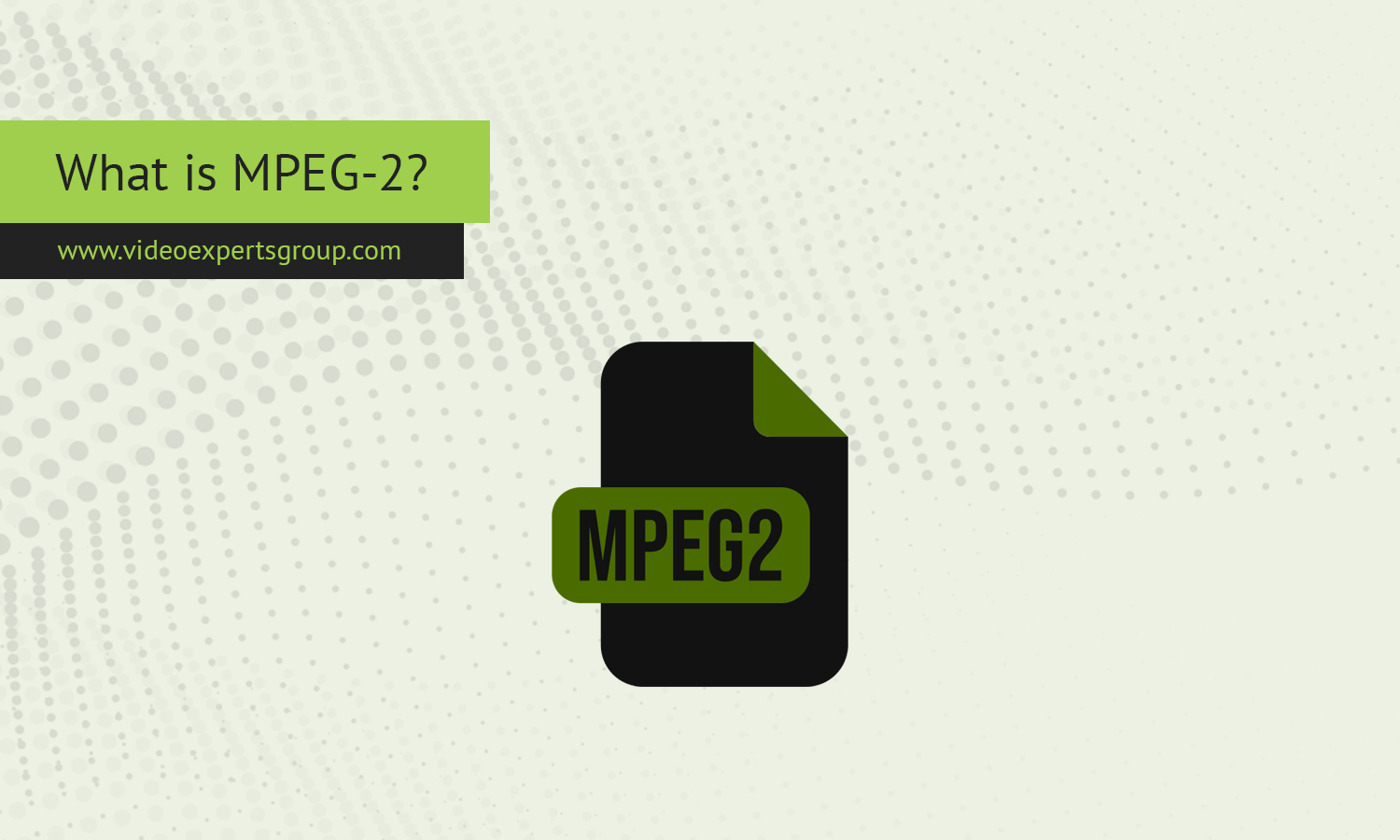MPEG-2 is a widely used standard for video and audio compression, primarily associated with television broadcasting, DVD video, and other digital video formats. Developed by the Moving Picture Experts Group (MPEG), MPEG-2 has become a cornerstone of digital video technology, offering a balance between quality and file size. Understanding MPEG-2 is essential for anyone involved in digital media, broadcasting, and video production.
Meaning
MPEG-2, short for Moving Picture Experts Group Phase 2, is a standard for the compression of video and audio data. It was developed in the early 1990s as an extension of the MPEG-1 standard, with enhancements designed to support higher resolution video, more complex audio configurations, and additional features suitable for television broadcasting, DVDs, and other digital video applications.
The MPEG-2 standard is divided into several parts, each addressing different aspects of compression and encoding. The most relevant parts for video and audio compression are:
-
MPEG-2 Video (Part 2): This part of the standard deals with the compression of video data. It supports interlaced video, which is commonly used in broadcast television, and provides efficient compression algorithms to reduce file size while maintaining video quality.
-
MPEG-2 Audio (Part 3): This part addresses the compression of audio data. It supports multi-channel audio, such as 5.1 surround sound, and offers various bit rates and sampling frequencies to balance audio quality and file size.
-
MPEG-2 Systems (Part 1): This part of the standard defines how video, audio, and other data streams are multiplexed into a single stream for storage or transmission. This is critical for applications like DVDs and digital broadcasting, where multiple streams need to be synchronized and transmitted together.
What is MPEG-2 Used For?
-
Television Broadcasting: MPEG-2 is the standard for digital television broadcasting, including satellite, cable, and terrestrial TV. It is used to compress and transmit video and audio data over broadcast networks, ensuring that high-quality video can be delivered efficiently to viewers' homes.
-
DVD Video: MPEG-2 is the primary video and audio compression format used on DVDs. The standard's ability to handle interlaced video and multi-channel audio makes it ideal for the high-quality playback required by DVD players. Virtually all commercial DVDs use MPEG-2 to store video and audio content.
-
Digital Video Storage: Beyond DVDs, MPEG-2 is also used for other forms of digital video storage, including video on-demand services and certain video file formats. Its efficient compression allows for high-quality video to be stored without taking up excessive storage space.
-
Streaming and Video Distribution: MPEG-2 is employed in some streaming services and video distribution formats, particularly where legacy systems or compatibility with older devices is important. While more modern codecs like H.264/AVC have largely supplanted MPEG-2 in this area, it remains relevant in specific contexts.
-
Blu-ray Discs: Although Blu-ray primarily uses more advanced codecs like H.264, MPEG-2 is still supported on Blu-ray discs, especially for backward compatibility with older MPEG-2 encoded content.
MPEG-2 Players
-
VLC Media Player: VLC is a popular, open-source media player that supports a wide range of file formats, including MPEG-2. It can play MPEG-2 video files and DVDs without requiring additional codecs, making it a versatile choice for users who need to play various media types.
-
Windows Media Player: Windows Media Player, included with Windows operating systems, supports MPEG-2 playback, particularly for DVDs. While newer versions may require additional software to support DVD playback, older versions natively support MPEG-2.
-
MPC-HC (Media Player Classic - Home Cinema): MPC-HC is a lightweight media player for Windows that supports MPEG-2 playback. It is particularly useful for users looking for a simple, efficient player without unnecessary features.
-
CyberLink PowerDVD: PowerDVD is a commercial media player that offers extensive support for DVDs, Blu-ray discs, and various digital video formats, including MPEG-2. It provides high-quality playback with features like upscaling and support for multi-channel audio.
-
Kodi: Kodi is an open-source media center application that supports MPEG-2 video playback, along with many other formats. It is ideal for users who want to organize and play their media files in a centralized interface.
-
GOM Player: GOM Player is another media player that supports MPEG-2 files. It offers advanced features such as customizable skins, subtitle support, and the ability to play damaged or incomplete files.
MPEG-2 is a foundational technology in the world of digital video, enabling high-quality video and audio compression for a variety of applications, from television broadcasting to DVD video. While newer standards have emerged, MPEG-2 remains relevant and widely supported, particularly in broadcasting and legacy video formats. Understanding its uses and compatible players is key to making the most of this enduring technology.
















